What is Sales Qualification?
Sales Qualification is the process or the steps taken for evaluating a potential prospect or lead against a set of factors that can be used to determine a customer-product-fit or a buyer's persona.
The sales qualification process helps you understand if the customer presented in front of you has the traits that result in an excellent fit for your product's usage. Sales qualification is a crucial process that helps sales teams determine which leads they should prioritize first and which are to be discarded or kept for the future. Sales qualification frameworks have been developed and implemented over the years to make the process more straightforward, relaxed, and implementable.

How do you Qualify Customer Sales?
Make sure you are asking important questions to qualify your ideal customers before going in for the hard sell. You need to ask yourself questions like:
- How are you being perceived by your customer?
- Do they match your customer profile?
- What are your leads' pain points?
- How do they make decisions?
- What other solutions might they be considering—and why?

What are the Qualifying Questions that you Need to Ask your Leads?
One of the challenges salespeople face is distinguishing between a lead and a viable prospect, one who has the potential to become a customer. Not everyone you speak with will be a good fit; hence you as an effective salesperson should be able to recognize this early on.
During your calls with your prospects, you need to qualify prospects before moving forward; otherwise, you would be wasting time with someone who would not buy from you. You can ask the following questions to sieve out the wrong leads.
- How did you hear about us?
- Are you the decision-maker?
- What problem are you trying to solve?
- Why are you solving this problem now?
- What have you tried in the past?
- What made you interested in your brand?
- What are the top priorities in a solution?
- What is your budget?
- What is the best way to communicate moving forward?
- How fast are you hoping to see results?
You can use these question to know the value of your lead by using point system such as a scorecard system to differentiate good and bad leads.
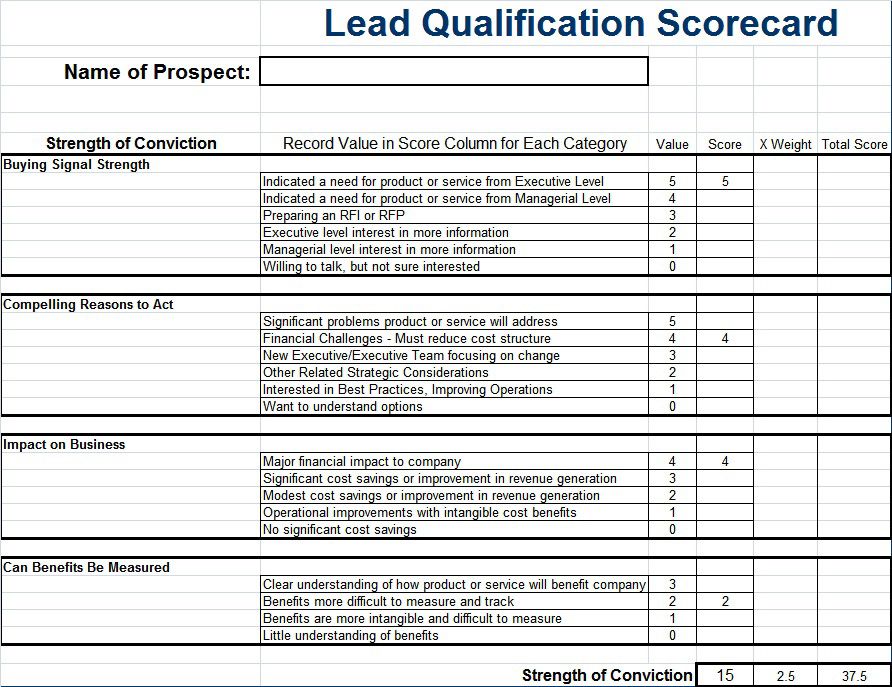
What is Lead Scoring?
You need a lead-scoring system in your organization to keep track of your qualified leads. The lead scoring process of ranking qualified leads is based on a few certain pre-set parameters.
Scoring is done by assigning a numeric value to each lead based on how ready they are to purchase your product. Lead scoring is based on different attributes like engagement, price, reviews, social posts, etc.
You can score the lead by using the following attributes:-
- Demographics : Knowing the geographical location and age group of the prospect can help with the lead scoring process easily.
- Company Information : The lead's company information is a crucial part of scoring leads. It will make it easy to score leads if you know the lead's company revenue, employee size, etc. Suppose your lead falls under the category you are targeting; it's easier to prioritize the lead.
- Buyer's Behaviour : Keeping track of the customers by monitoring their social media behavior will help you score your leads better. You can track how much time a lead spends on their website, which product they clicked on, and their price range. Email engagement another very essential factor of the scoring lead
- Arena of Interest : Another area that you can look into for lead scoring is to observe which product and how much time he is spending where and what he is searching for.
- Activities : Observing the customer's sales cycle, number of emails unread or read, engaging with youtube, social media activities, web page views, number of downloads and forms filled, etc., can help you score easier.
The lead scoring can help in better conversion and in many other ways like:
- The sales team can save time by focusing on the right lead
- Scoring helps easier communication between the sales team
- Helps in personalized sales pitching
- Determines which leads need to be prioritized
- Lead scoring increases work efficiency
- Helps implement a structured lead nurturing strategy
- A better understanding of your customers
- It helps align the organization's marketing and sales teams
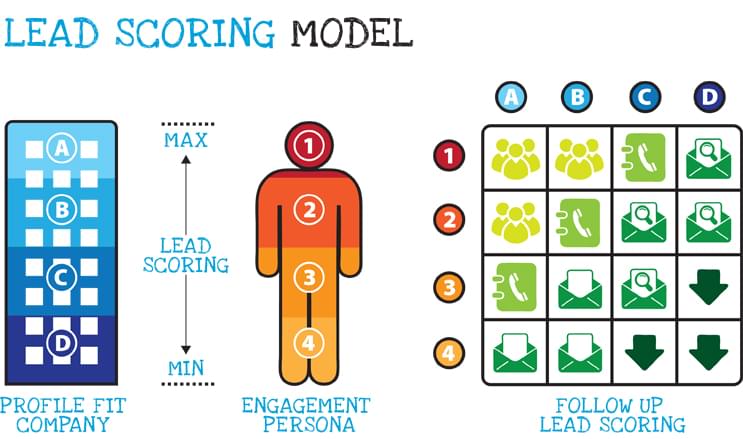
What is a Sales Qualification Framework?
The best way to have a successful sales qualification process is to have a sales qualification framework. Sales framework's describes a set of tools that we use to teach the sales methods and skills to employers. The frameworks provide thinking tools that focus attention on the right things. Having a food framework helps less experienced salespeople to recognize and adopt the best sales method that suits their needs.
What are the Different Sales Frameworks?
Start with BANT
BANT is well known among sales leaders and is key to the sales pipeline, and offers you a base to build a reliable foundation for the next sale.
BANT stands for:
- Budget: How much can your lead spend?
- Authority: If the prospect has the decision-making authority, then find out who are they
- Need: What is the prospect's main business need?
- Time frame: In how much time will the prospect be implementing a solution?
Understanding how much budget your prospect has dictates if your product can meet their expectation. This is why understanding their needs and Authority helps discover if there is a genuine chance of a sale.
Keeping a timeframe provides urgency behind their inquiry. Asking the right questions that serve a dual purpose provides the BANT with information you need to move the lead forward to a sale.
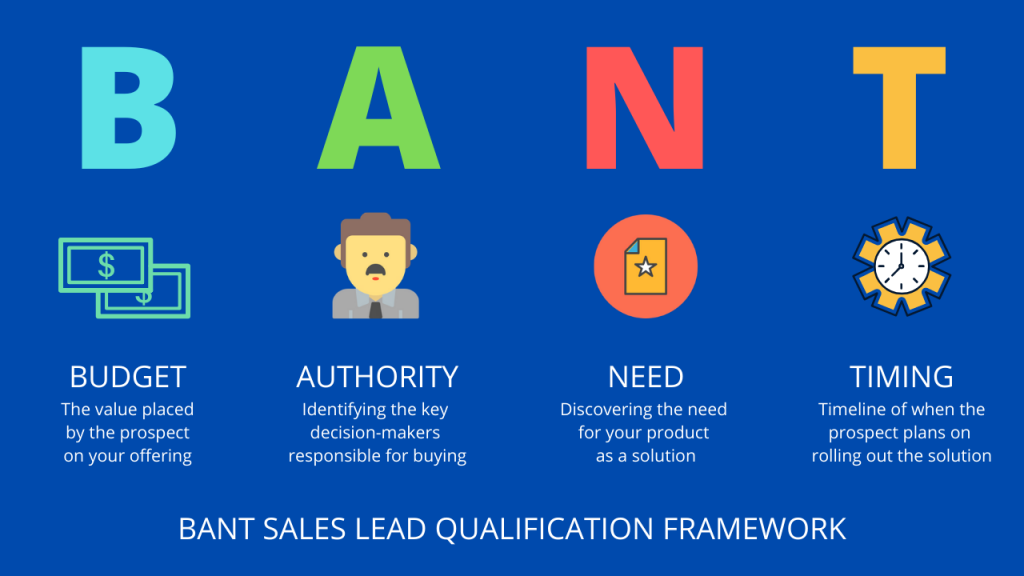
SPIN - Asking the Right Questions
SPIN was created to help sales teams ask the right questions during the qualifying period. This is so that they can gain the information needed to successfully nurture the lead through their pipeline while boosting lead engagement.
This is how it works:
S - Start by asking the prospect the correct questions. You need to frame the questions to understand their motives and tailor their offer to the lead's needs. Example: "How do you currently gain and manage your lead?"
P - Help the prospect or lead understand their business has a problem you can resolve while gaining information. Example: "Does your team have a shortage of quality leads?"
I - Prove to the lead the impact these problems can have on their business if they do not develop a solution. Example: "Is having low-quality leads slowing the growth of the company?"
N - Finally, ask how important it is to find a solution for their problems, and provide a solution with your product. Example: "Why is gaining quality leads essential for your business growth?"
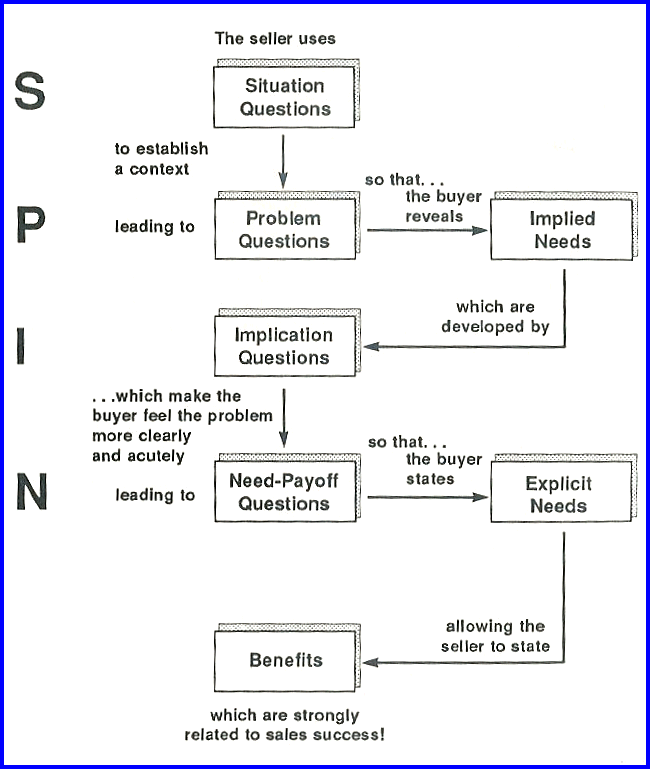
Asking SPIN questions benefit the lead as much as it benefits you. This process helps your prospect understand how they can improve their business and prevent future problems. It also provides you with the perfect structure to lead the prospects down the sales pipeline.
ANUM
ANUM is a process similar to BANT framework. It reworks the **BANT **version that prioritizes Authority over Budget or Money. ANUM is a highly focused on lead qualification at a very early stage.
ANUM basically stands for Authority, Need, Urgency, and Money:
- Authority: Is the prospect the key decision-maker for the purchase of the product?
- Need: Define and identify the needs of the prospects?
- Urgency: How soon are they looking for a solution?
- Budget: Are they capable of purchasing your solution?
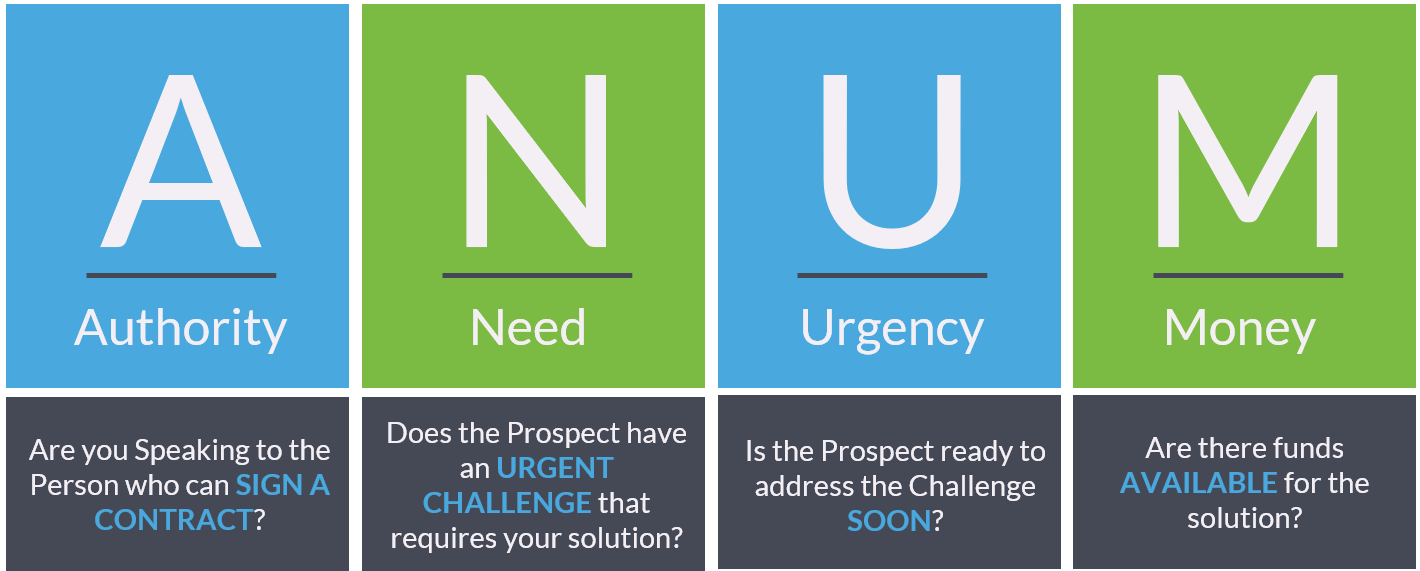
CHAMP
CHAMP opens up Challenges, Authority, Money, and** Prioritization**. It is similar to ANUM however, it places Challenges ahead of Authority. A prospect or lead buys a product only if they have a challenge and your product solves the problem.
CHAMP process defines Authority as a catalyst and not as a deterrent. You need to ask the lead the relevant questions that can help you map out their company's organizational structure and find the inherent problem you can help solve effectively.
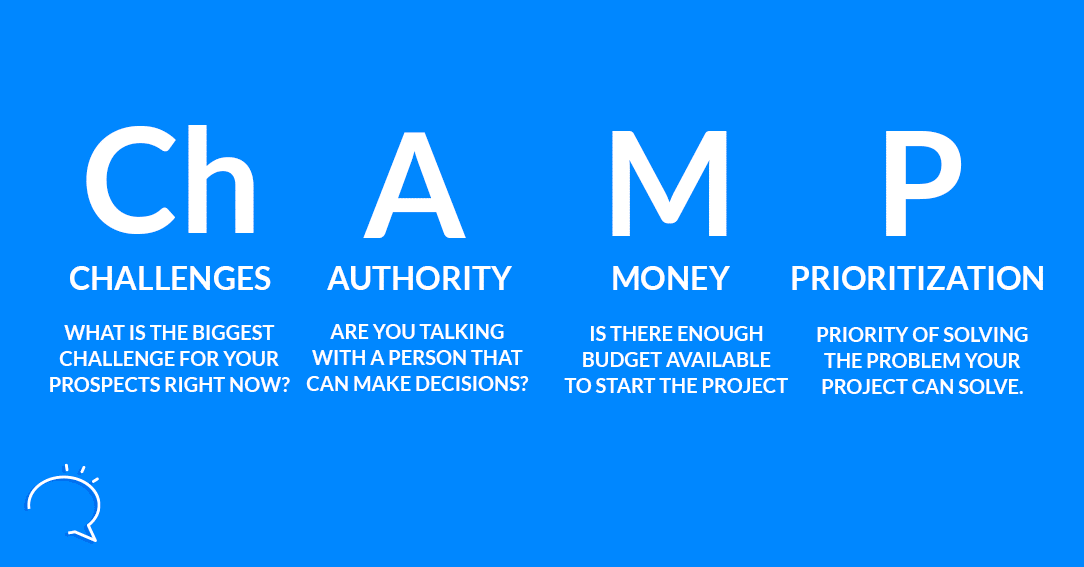
GPCTBA/C&I
GPCTBA/C&I acronym stands for Goals, Plans, Challenges, Timeline, Budget, Authority, Negative consequences, and Positive Implications.
It is a framework devised on having an effective response to changing buyer behavior. It makes sure salespeople not only sell your services and products but also add value during the sales.
The salesperson has to understand the problem lying underneath the surface of the visible disturbances in this framework.
- Goal: Find, clarify and set goals with your leads and help them define it
- Plan: Determine the strategies of your customer and find out what can work or not work in the future and why
- Challenges: Define your prospect's problems and reinforce that the way things are not working now. Till the customer understand that they need help, a prospect will not become a customer.
- Timeline: Your time is the most valuable asset you have. You need to help yourself by prioritizing and preparing your lead list.
- Budget: You don't ask the amount of budget your prospect has, but instead, it justifies their investment in your product or service. Time is the budget. Know if you are worth their time?
- Authority: It is not about finding the key decision-maker for the procurement of your product. It is about finding the person:
- Who makes the economic buying decision?
- What are their priorities?
- What are their concerns?
- Negative Consequences and Positive Implications: You need to allow your prospects to understand:
- What are the repercussions of a plan that are not going the way it is supposed to be?
- What are the benefits of everything going according to the plan?
MEDDIC
MEDDIC acronym stands for Metrics, Economic Buyer, Decision Criteria, Decision Process, Identify Pain, and Champion. A sales representative needs to understand all the aspects of the target companies purchase process. Suppose your business sells a product that requires a behavioral transformation or a higher-priced product. In that case, it is important to understand exactly what a prospect buys, why they buy and who advocates you, which is crucial to maintaining a healthy pipeline.

Conclusion
Always choose a sales qualification framework as per your business needs. Implementation of a sales qualification framework and strategies can be too big and demanding. They are an efficient method for making your lead qualification more accurate and capable.
The purpose of an enhanced lead qualification process are:
- To estimate whether or not an opportunity is worth pursuing
- Help sales reps to work on a proposal so that they can tailor an offer for the maximum effectiveness
To summarize, the first step of any sales qualification process is to generate a lead score. The second step is making a discovery call to understand, find and outline their requirements, purchasing power, and Authority using a good sales qualification framework.







